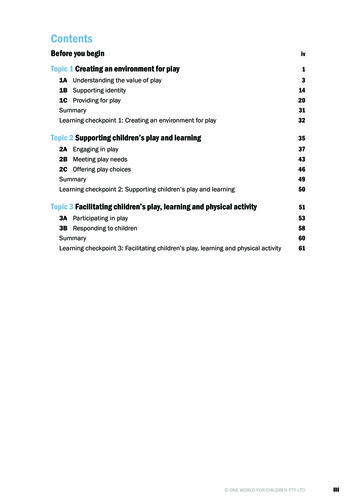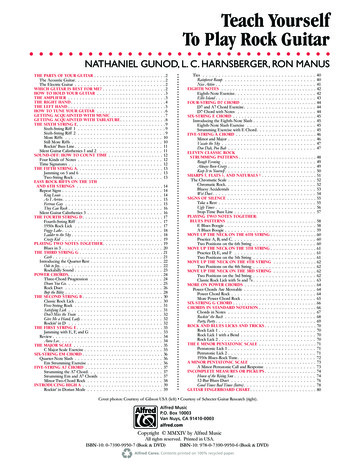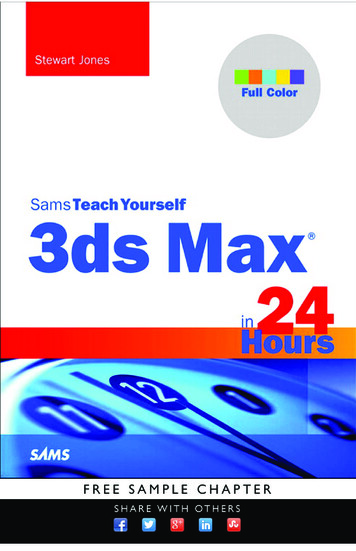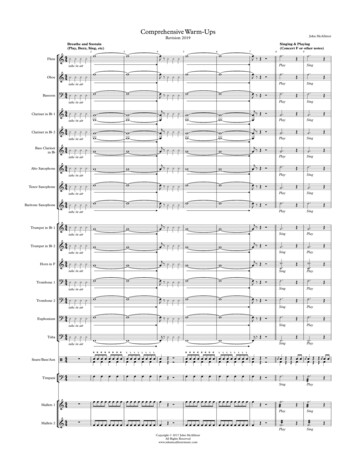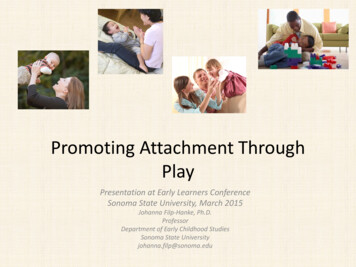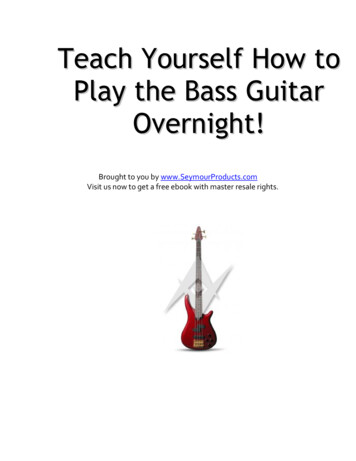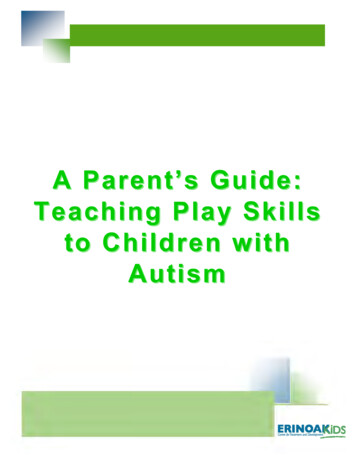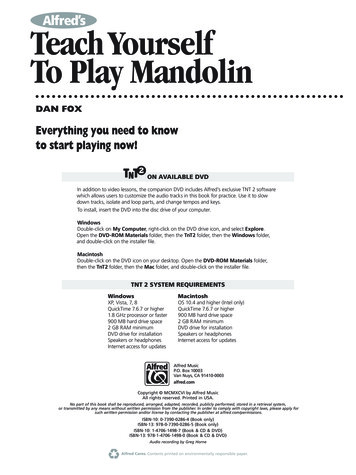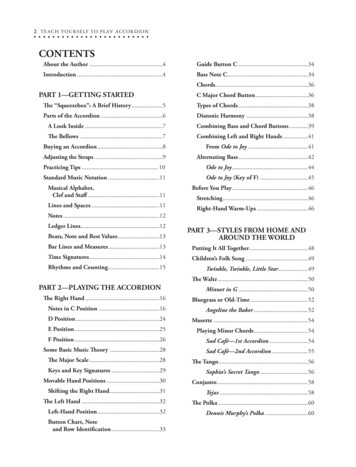
Transcription
2 TEACH YOURSELF TO PLAY ACCORDIONCONTENTSAbout the Author .4Guide Button C.34Introduction .4Bass Note C.34Chords.36PART 1—GETTING STARTEDC Major Chord Button.36The “Squeezebox”: A Brief History.5Types of Chords.38Parts of the Accordion .6Diatonic Harmony.38A Look Inside.7Combining Bass and Chord Buttons.39The Bellows .7Combining Left and Right Hands.41Buying an Accordion .8From Ode to Joy.41Adjusting the Straps .9Alternating Bass.42Practicing Tips . 10Ode to Joy.44Standard Music Notation .11Ode to Joy (Key of F).45Musical Alphabet,Clef and Staff.11Before You Play.46Lines and Spaces .11Notes.12Ledger Lines.12Beats, Note and Rest Values.13Stretching.46Right-Hand Warm-Ups.46PART 3—STYLES FROM HOME ANDAROUND THE WORLDBar Lines and Measures.13Putting It All Together.48Time Signatures.14Children’s Folk Song .49Rhythms and Counting.15Twinkle, Twinkle, Little Star.49The Waltz .50PART 2—PLAYING THE ACCORDIONMinuet in G.50The Right Hand .16Bluegrass or Old-Time.52Notes in C Position .16Angeline the Baker.52D Position.24Musette .54E Position.25Playing Minor Chords.54F Position.26Sad Café—1st Accordion.54Some Basic Music Theory .28Sad Café—2nd Accordion.55The Major Scale.28The Tango.56Keys and Key Signatures.29Sophia’s Secret Tango.56Movable Hand Positions .30Conjunto.58Shifting the Right Hand.31Tejas.58The Left Hand .32The Polka.60Left-Hand Position.32Dennis Murphy’s Polka.60Button Chart, Noteand Row Identification .3344736 TY Accordion INT 02-96.indd 28/17/15 10:02 AM
TEACH YOURSELF TO PLAY ACCORDION 3Zydeco and Cajun.62Latin American .82Zydeco Romp.62The Clave Rhythm .82Cajun 2-Step.64The Montuno .82The Irish Tradition .66Air.66PART 5—APPENDIXHornpipe.66Playing with the Band.84Reel.66Amplifying Your Instrument.85The Counter Bass.66MIDI Accordions.86Embellishments.67Digital Accordions.86Air Alone.68Reed Settings—Accordion Voicesand Registers.87Air Alone (with ornaments).69Maggie’s Hornpipe.70Maggie’s Hornpipe (with ornaments).71PART 4—THE WELL-ROUNDEDSIDE PERSON: PLAYINGWITH A GROUPTunings.87Types of Accordions.88Sizing an Accordion.89The Care and Feedingof Your Free-Reed Machine.90Do It Yourself Repair.917th Chords .72Self-Maintenance.91The Blues .73Great Musicians, Bands and Recordings.92The 12-Bar Blues Progression .73Resources.93Improvising .74A Note From the Author.94Swing Eighths .74Bass and Chord Button Chart.96Da Blues.75Rock ’n’ Roll .76Squeezebox Rox.76Swing .77The Swingbox Comps.77Jazz .78The Circle of 5ths .78Tin Pan Squeezebox.79Country and Western .80A Cry in Your Beer Country Tune.8044736 TY Accordion INT 02-96.indd 38/17/15 10:02 AM
TEACH YOURSELF TO PLAY ACCORDION 7A LOOK INSIDEThe mechanism inside the accordionthrough which air passes and createssound is the reed block. It is verymuch like a harmonica, a block ofwood with a series of holes. Alongthe tops of these holes are small slipsof metal called reeds or reed plates.When air passes through, the reedsvibrate and produce sound.Reed blocks.Reed blocks up close.Get the Feel for Your BellowsTip: You can use the air button toclose the bellows when you need tostart a new phrase.THE BELLOWSThe bellows is the heart and soul ofthe accordion. It lies in the centerof the instrument and is basicallya folded, sealed paper pump thatpushes and pulls air through thereed blocks to create sound. It isthe mastery of this “push and pull”that allows you to create dynamics(changes in the loudness or softnessof sounds), alter your phrasing (themusicality with which you play acertain line) and basically create yourown sound.Closed position.44736 TY Accordion INT 02-96.indd 7It’s time for you to get a feel forhow the bellows works. Unsnapthe bass straps (see page 6), topand bottom, and open and closethe bellows several times. Using thethumb of your left hand, press theair button (page 6) and open andclose the bellows several more times.Remember to always pick up theaccordion while closed and beginplaying from this closed position (seephoto below).Opening the bellows.Bellows extended.8/17/15 10:03 AM
16 TEACH YOURSELF TO PLAY ACCORDIONPART 2—Playing the AccordionTHE RIGHT HANDAll notes in treble clef (see page 11)are played by your right hand on thekeyboard.The fingers of the right hand arenumbered 1–5, starting with thethumb (1) and ending with thepinky (5).23415Right-hand finger numbers.NOTES IN C POSITIONThe C NoteIf you look at the keyboard, you willnotice that the black keys occur ingroups of twos and threes. The firstnote you will learn to play is a C.The note C is the first white key thatappears before every group of twoblack keys.In this book, we will refer to aposition as the distance of fiveconsecutive white keys. A finger isdedicated to each key, starting withthe thumb and ending with thepinky. The C position starts with theC note played by the thumb.C on the KeyboardMiddleCC on the Staff& wThe Repeat Sign.The repeat sign tells us to go backto the beginning and play the samething again.44736 TY Accordion INT 02-96.indd 16C played on the accordion.8/17/15 10:03 AM
24 TEACH YOURSELF TO PLAY ACCORDIOND POSITIONWhen you place your thumb on theD and let all four fingers rest on thenext four notes, you are in D position(see photo to the right). There is anew note for the 5th finger, an A.D Position on the KeyboardD E F GAD Position on the Staff1&wD2wE3wF4wG5Right-hand finger numbersANew notewD position on the accordion.Let’s play a few examples in Dposition. Use your own judgementabout bellows direction and when tochange it. It is a good idea to writethese things into the music as youwork them out.D POSITION EX. 1Track 22& 44 .wD POSITION EX. 2Track 23& 44 œœœœœœœœœœœœœœœw.œ.D POSITION EX. 3Track 24& 44 œ44736 TY Accordion INT 02-96.indd 24œ œœ œœ 8/17/15 10:03 AM
TEACH YOURSELF TO PLAY ACCORDION 45Let’s see what happens when wetranspose “Ode to Joy” to the key ofF Major. In order to maintain thecorrect scale pattern we’ll have tolower the B to a B b.F MAJOR SCALEFTrackMAJORSCALE55FG& wW1AwBwW2CbwH3wW4W5wDw6wHEWF78(1)Track 56& b 44 œ œ3Scaledegree:3? b 44 œ œœ.œ œ œœœ œ œœœœ œ œ œœ œœ.œ œ œœ55œ œ œœ&b 5?b4œ œ œ œ3œ44736 TY Accordion INT 02-96.indd 45œ œ45œ œ œ5œ443322œ œ œ1h1œ223332œœjœ 22œœjœ 11 8/17/15 10:03 AM
54 TEACH YOURSELF TO PLAY ACCORDIONMUSETTEThe musette sound, characterized bya slight waver—an ever so slightlyout-of-tune quality (see page 87,Tunings)—immediately transportsus to a small café in southern France.For our next example, you will needto learn how to play minor chords.MinorchordsPLAYING MINORCHORDSWe’ve already learned that minorchords can be made by lowering orflatting the 3rd of a major chord(page 38). Minor chords (designatedwith a lowercase “m”) are played thesame way major chords are, theyare just a row over. Use the samefingering, just reach a bit farther withyour 3rd finger. Another option is touse your 4th finger on the bass andyour 2nd finger on the minor chord.EADEMAMDMThis next song is a duet (a piece ofmusic with two parts to be playedsimultaneously by two performers).Learn the 1st accordion part (below)and play it with the 2nd accordionpart (page 55) on the recording; thenswitch parts. Try using a multiple reedsetting on this.EmAmDm4th rowTrack 69œ4 œ œ 4&4? 445&?œmœŒœ4 œ œ œmœ44736 TY Accordion INT 02-96.indd 54Œ œŒ œœœœœœ œ œœ œœChord qualityœŒœœMœŒ œ4œ œ œ œœœœ œ œŒœœŒœœœŒ œŒ œœœ œœœŒ œ.Œ œœœ œœ œœœŒœ8/17/15 10:03 AM
82 TEACH YOURSELF TO PLAY ACCORDIONThe range of Latin American musicis vast and varied. There are manystyles: salsa, calypso, samba, bossanova, reggae, etc. Its percussive,rhythmic element came to Cubafrom Africa, while its harmonicqualities came from Spain. Put themtogether and the result is what wenow call Afro-Cuban music.THE CLAVE RHYTHMAn important part of Latin musicis the clave (pronounced CLAH-vā)rhythm. It is a two-bar, repeatingpattern that gives Latin music that“off-step” or syncopated feel. Thereare many kinds of clave rhythms;below are two of the most common.Count and clap the rhythms aloudand you will instantly get thatsalsa feel. Notice that countingnumbers below rests are written inparentheses.FORWARD CLAVETrack 88& 44 œCount: 1‰ œ& (2)‰ œ&3 (&)4&Œœ(1&) 2&œŒ3& (4&).This one just reverses the order ofthe two measures.REVERSE CLAVETrack 89& 44 ŒQCount: (1 &) 2&QŒ3 &(4Q&)THE MONTUNOMontunos are the next mostrecognizable pattern in Latin music.They are distinctive rhythmicpatterns—played on the piano—thatdrive the band or orchestra.‰ Q1& (2)&‰ Q3 (&)4&.How can we approach this on theaccordion, you may ask? Use thesame approach we have been usingso far: Find the instruments or partsto emulate; figure out what makesthem tick; and then adapt it to yourown style.For example:MONTUNO EX. 1Track 904&4 œCount: 1&œJ œ2&3œ&œ œJœJ4&1&œ2&3œ .Jœ&4 &MONTUNO EX. 2Track 91& 44 œ1&44736 TY Accordion INT 02-96.indd 82jœ œ2&3œ b œJ& 4&œ œJ1& 2œ&jœ b œ n œ .3 &4&8/17/15 10:03 AM
96 TEACH YOURSELF TO PLAY ACCORDIONBASS AND CHORD BUTTON Rows: 144736 TY Accordion INT 02-96.indd 96A#GCFBbEbAbDbGbCbFbBbb2A#m#AMD #m#DMG MEbmbEMAbmbAMDbMGbMDbmGbmCbmbCMFbmbFMBbbmbbB Db7C#dF#dBdEd1st Row—Counter BassesAd2nd Row—Fundamental BassesDd3rd Row—Major Chords (M)Gd4th Row—Minor Chords (m)Cd5th Row—Dominant 7th Chords (7)6th Row—Diminished 7th Chords (d)FdBbdEbdAbdDbdGbdbG7Cb7Fb7CbdFbdBbbdbbB 7568/17/15 10:03 AM
patterns—played on the piano—that drive the band or orchestra. How can we approach this on the accordion, you may ask? Use the same approach we have been using so far: Find the instruments or parts to emulate; figure out what makes them tick; and
